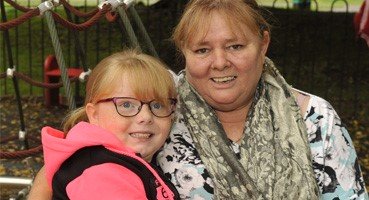Our Research Intern, Scarlett Parr-Reid, sits down with Dr. Federico Herrera (pictured below) for the second part of a two-part interview series, to discuss his team’s research project at the University of Lisbon, on ARSACS, which was recently funded by Ataxia UK.

Could you describe what ARSACS is, and what causes this type of ataxia?
Autosomal Recessive Ataxia of Charlevoix-Saguenay (ARSACS) is a type of spastic ataxia that has shown a higher prevalence in the French-speaking regions Charlevoix and Saguenay in Quebec, Canada. After Canadians organised themselves and promoted research on ARSACS, it has been diagnosed worldwide.
It is caused by mutations in the gene for a protein called sacsin. The autosomal recessive part of the name means that two copies of the mutated sacsin gene must be inherited for a person to have ARSACS, one from the person’s mother and one from their father. If a person only has one copy of the gene, they are known as a carrier, and do not show symptoms of the disease. The function of sacsin proteins is not well known, but when their function is lost, this leads to the development of ARSACS. This happens because the loss of function affects the cerebellum, which is the part of the brain involved in movement, balance and co-ordination.
You and your team recently developed two cell models of ARSACS, in cells of the human and rat central nervous system known as glia. Can you talk about what these models are and what you found?
One of the things that can happen in scientific research is that it has fashions. This means it can be very common for the scientific community to look at a problem in only one way. In the case of neurodegeneration, most of the studies focus on a type of cells called neurons, because neurons are implicated in these conditions. However, there are other cells that are involved in neurodegenerative conditions, and we are seeing research into other cells known as glia in conditions such as Alzheimer’s disease and Parkinson’s disease.
Glial cells not only support neurons, but they also play important roles in sending messages to cells and are involved in inflammation. So, in our lab we have developed two glial cell models of ARSACS. The first is a model of ARSACS using glial cells called astroglia in rats where we looked at what happened if we removed sacsin, and whether astroglia would behave similarly to neurons. Thanks to funding from the AR
SACS Foundation in Canada and from Ataxia UK, we have also looked at microglial cells, which defend against infection and damage in the brain. We removed sacsin from human microglial cells, and saw that they developed similar characteristics as neurons in ARSACS.
What is the impact of the funding from Ataxia UK and the ARSACS Foundation on your research?
Rare conditions such as ARSACS do not tend to generate as much research funding, yet they represent a major scientific challenge. We extend our thanks to the ARSACS Foundation and Ataxia UK for providing funding to allow us to conduct this project. By promoting research on conditions such as ARSACS and other ataxias, it makes possible further research opportunities and funding. For example, the funding provided for this research project and others has made it possible for 6 research students to develop an understanding of spastic ataxias. The funding has impacts on several generations of scientists.
In this next part of the project, you and your team are looking at the effects of treating rat, human and mouse glial cells with a naturally occurring compound called Withaferin A (WFA). You predict that the effects of WFA will mimic ARSACS features caused by sacsin protein deletion. How might WFA do this?
The most common hallmark of ARSACS is dysfunction of the cell scaffolding known as the cytoskeleton. The cytoskeleton is made up of protein fibres that keep the cell resistant to mechanical stress, keep it moving and allow the cell to explore its environment. There are three types of fibres within the cytoskeleton, one type of which is called intermediate filaments. These protein filaments are responsible for the mechanical resistance of cells. Intermediate filaments are the most affected parts of the cytoskeleton in ARSACS, as they bundle together in one part of the cell, disorganising the cytoskeleton and making cells more sensitive to stress.
We see dysfunction of the cytoskeleton in neuronal and glial cell models of ARSACS. Withaferin A is a natural compound that can interfere with the cytoskeleton, making it disorganised. We hypothesise that therefore WFA will have similar effects as we see in ARSACS. This would be true only for the features that occur in ARSACS because of disorganisation of the cytoskeleton, since sacsin loss can have other consequences in cells that are not related to the cytoskeleton. So, with this model we can differentiate between those effects that are caused by alteration of the cytoskeleton in ARSACS and effects that are not.
What are the advantages of producing a pharmacological model of ARSACS using a naturally occurring compound such as WFA, compared to other methods?
To produce models such as mice or rats with genetic changes requires specialist training and knowledge, and is more costly. Whereas pharmacological models such as using WFA can be accessible cheaply to a large number of researchers, which can then in turn allow more people to research rare diseases such as ARSACS, helping the research to advance further. Additionally, pharmacological models like using WFA are more flexible than genetic models where a gene is deleted. Genetic models of ARSACS are necessarily chronic, allowing cells and animals without sacsin function to adapt, whereas in pharmacological models we can do both high-dose, acute treatments or low-dose chronic treatments. This means that we can check easily both short- and long-term effects of sacsin loss and cytoskeletal disorganization.
If the WFA model of ARSACS is successful and can be replicated, how do you hope it can be used to advance ARSACS research and benefit patients with the condition?
Something we would like to achieve is to produce forms of WFA that can stain cells, making its effects on intermediate filaments visible. This is important, as traditionally intermediate filaments are harder to detect within cells. Being able to see them means we can get a better understanding of how they are affected in ARSACS. Our research will also help to differentiate targets for drugs that may treat ARSACS. For example, it is likely the condition will be treated through a combination of drugs, including one that deals with the cytoskeleton.
To read more about Dr Federico Herrera and his lab’s project on ARSACS, click here.
To read an interview with Dr Federico Herrera on he and his lab’s project looking at Spastic Ataxia Type-8 (SPAX8), click here.






